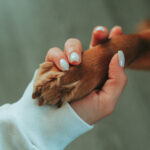In today’s competitive business landscape, recruitment excellence plays a pivotal role in creating high-performing teams that drive organizational success. A well-crafted recruitment strategy can attract top talent, foster a positive candidate experience, and ensure seamless team integration. In this blog, we will explore the key elements of building high-performing teams from the ground up, emphasizing the importance of recruitment excellence in this process.
I. Understanding Recruitment Excellence
A. Defining Recruitment Excellence and its Significance Recruitment excellence refers to the art of identifying and attracting the right talent for your organization. By focusing on this aspect, businesses can assemble teams comprising individuals with diverse skills, experiences, and cultural fit. These teams are more likely to excel in their roles and contribute significantly to the company’s objectives.
B. The Correlation Between High-Performing Teams and Recruitment Practices Research consistently shows that high-performing teams are a direct result of effective recruitment practices. When organizations invest in finding the best-fit candidates, they set the foundation for success, increased productivity, and reduced turnover rates.
C. Explaining the Benefits of Investing in Recruitment Excellence Recruitment excellence not only saves time and resources but also leads to enhanced employee satisfaction and retention. Building strong teams through careful recruitment positively impacts company culture and paves the way for sustainable growth.
II. Key Elements of Building High-Performing Teams
A. Identifying the Right Talent: Strategies for Effective Candidate Sourcing
Utilizing multiple channels for candidate sourcing, such as job boards, social media, and employee referrals.
Leveraging professional networking platforms to connect with passive candidates.
Partnering with recruitment agencies and headhunters for specialized talent searches.
B. Crafting Compelling Job Descriptions to Attract Top-Tier Candidates
Ensuring clear and concise job descriptions that outline roles, responsibilities, and growth opportunities.
Highlighting the unique aspects of the company culture to appeal to potential candidates.
Using persuasive language and storytelling to create an emotional connection with applicants.
C. Leveraging Employer Branding to Enhance the Recruitment Process
Developing a strong employer brand that showcases the organization’s values and work environment.
Encouraging employee testimonials and positive reviews to build trust with candidates.
Engaging with potential candidates on social media platforms to increase brand visibility.
D. The Role of Technology and Data-Driven Insights in Recruitment
Adopting applicant tracking systems (ATS) to streamline and manage the recruitment process.
Analyzing recruitment data to identify trends, assess the effectiveness of strategies, and make data-driven decisions.
Utilizing AI-powered tools for resume screening and candidate matching.
III. Nurturing a Positive Candidate Experience
A. The Importance of Candidate Experience in Recruitment Success
Understanding the impact of a positive or negative candidate experience on the organization’s reputation.
Recognizing that candidates are potential customers and brand advocates, regardless of the outcome.
How a positive candidate experience can lead to higher acceptance rates for job offers.
B. Strategies for Creating a Seamless and Engaging Candidate Journey
Responding promptly to candidate inquiries and providing regular updates throughout the hiring process.
Designing an intuitive and user-friendly application process on the company website.
Personalizing communication with candidates to make them feel valued and appreciated.
C. Turning Rejected Candidates into Brand Ambassadors Through Positive Interactions
Delivering personalized feedback to rejected candidates to help them understand areas of improvement.
Inviting qualified candidates to join talent communities or subscribe to the company’s newsletter for future opportunities.
Encouraging rejected candidates to follow the company’s social media accounts for updates and industry insights.
IV. The Interview and Selection Process
A. Conducting Effective Interviews: Types, Techniques, and Best Practices
Utilizing different interview formats such as behavioral, situational, and panel interviews.
Training interviewers to ask open-ended questions that reveal a candidate’s problem-solving and communication skills.
Implementing structured interview rubrics to ensure fair and consistent evaluations.
B. Evaluating Candidates Beyond Qualifications: Cultural Fit and Soft Skills Assessment
Identifying the company’s core values and assessing candidates for cultural alignment.
Incorporating soft skills assessments to gauge qualities like teamwork, adaptability, and leadership potential.
Conducting team-based interviews to observe how candidates interact with potential future colleagues.
C. Utilizing Assessment Tools and Exercises for Informed Decision-Making
Implementing skill-specific tests and exercises to assess technical abilities and creativity.
Using simulation exercises to evaluate how candidates handle real-life scenarios.
Collaborating with department heads or team members to gain different perspectives on candidates.
V. Onboarding and Team Integration
A. The Significance of a Well-Structured Onboarding Process
Highlighting the onboarding process’s impact on employee retention and job satisfaction.
Developing a comprehensive onboarding program that includes essential training and orientation.
Assigning mentors or buddies to new hires to facilitate a smooth integration into the team.
B. Building Rapport and Trust with New Team Members from Day One
Encouraging open communication and providing a safe space for new employees to voice their concerns.
Organizing team-building activities to foster connections and a sense of camaraderie among team members.
Involving new employees in decision-making and seeking their feedback on the onboarding experience.
C. Fostering a Culture of Collaboration and Support to Enhance Team Integration
Establishing clear expectations for collaboration and teamwork within the organization.
Promoting cross-functional projects and initiatives to encourage interaction among team members from different departments.
Providing ongoing support and resources to help teams overcome challenges and achieve their goals.
VI. Developing and Sustaining High Performance
A. The Role of Leadership in Maintaining Team Excellence
Identifying the characteristics of effective leaders who inspire and motivate their teams.
Offering leadership development programs to equip managers with the necessary skills to lead high-performing teams.
Recognizing and promoting leaders who actively contribute to team growth and success.
B. Encouraging Continuous Learning and Growth Within the Team
Providing access to training and development opportunities for skill enhancement.
Implementing a culture of continuous feedback and performance reviews to facilitate improvement.
Offering incentives and recognition for team members who pursue additional certifications or education.
C. Recognizing and Rewarding Exceptional Performance to Boost Motivation
Establishing a fair and transparent recognition and reward system to acknowledge outstanding achievements.
Celebrating team successes and milestones to foster a sense of pride and accomplishment.
Considering both monetary and non-monetary rewards to cater to individual preferences.
VII. Measuring Success and Continuous Improvement
A. Identifying Key Performance Indicators (KPIs) for Measuring Team Success
Defining relevant metrics, such as productivity, employee engagement, and turnover rates.
Using surveys and feedback mechanisms to collect data on team performance and satisfaction.
Setting realistic targets and benchmarks for continuous improvement.
B. Gathering Feedback from Team Members and Stakeholders for Improvement
Conducting regular team meetings and one-on-one sessions to solicit feedback and suggestions.
Involving stakeholders in the evaluation process to gain diverse perspectives.
Analyzing feedback to identify areas of improvement and implementing necessary changes.
C. Iterative Enhancements: How to Adapt Recruitment Strategies to Changing Needs
Staying updated with industry trends and evolving job market demands.
Conducting regular audits of recruitment processes to identify potential bottlenecks.
Adopting a flexible and agile approach to adapt recruitment strategies as needed.
Takeaway
In conclusion, recruitment excellence is the cornerstone of building high-performing teams that propel organizations to success. By understanding the importance of candidate experience, employing effective recruitment strategies, and fostering a culture of collaboration and growth, businesses can create dynamic teams capable of tackling challenges and achieving remarkable results. Embracing continuous improvement and adaptability in recruitment practices ensures that companies stay ahead in the competitive talent landscape, driving sustainable growth and prosperity.








